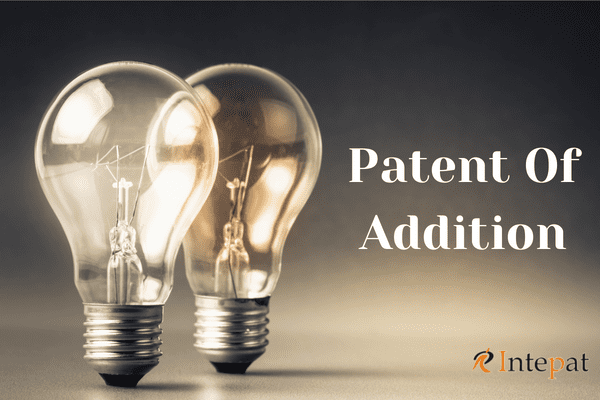
Patent of Addition – A comprehensive Overview
 Patent of Addition
Patent of Addition
The U.K. Patents Act of 1949, based on the recommendations of the Swan Committee, profoundly influenced the report on the Revision of the Patents law of 1959 by the Ayyangar Committee.
As a result, the inclusion of patents of addition in the Indian Patent Act 1970 took place. This inclusion was done to provide sufficient opportunities for the patentees to claim their inventions in a way that would cover variations of the monopoly claimed in respect of their primary invention.
This application is made to make any modification or improvement of an invention. To be patentable, this should be something that satisfies the test of the invention. A patent of addition is only granted after granting the patent for the primary inventions.
Patent of Addition is covered under Sections 54, 55, and 56 of the Patents Act 1970. The applicant of the patent of addition application must be identical, as was in the main patent application. As per the provision, if there is an additional applicant, a patent of addition may not be pursued. According to Rule 13(3), each such patent of addition shall include a reference to the main patent and a definitive statement that mentions whether the invention is an improvement or modification of the invention claimed in the complete specification of the main application.
The priority date of a patent of addition will be considered as the date of applying for a patent of addition.
While some countries, including India, Australia, and the U.S., continue with the practice, several countries have abolished the concept of granting patents for the improvements or modifications of the main invention. The patent shall expire twenty years from the filing date of the earliest application from which the benefit is claimed.
Suppose the patent for the primary invention is revoked under the Act. In that case, the patentee can request the controller /the court in the prescribed manner and have the patent of addition as an independent patent for the remainder of the term and shall continue in force as an independent patent. The same fees shall be after that payable if such patent becomes an independent patent upon the exact dates.
A few advantages of patent of addition:
1. It is economically more beneficial. Suppose the parent patent is not revoked and the additional patent is not converted into an independent patent, as requested by the patentee. In that case, one does not have to pay a separate renewal fee for the patent(s) of addition in India.
2. The improvement over the main patent covered by the additional patent cannot be invalidated on the grounds of a lack of inventive steps.
Disadvantages associated with the patent of addition:
1. As it expires along with the main patent, the term for which the patent of addition will remain in force is reduced even though it gets a new filing date or priority date.
2. An application may not be able to claim benefits from the earlier filed parent application since it will be entitled to a new filing date. Any application (other than the parent application) that may have been filed or published before the filing date of the patent of addition may be used to challenge the invention’s patentability.
‘Patent of addition’ is an instrument for protecting products or processes and their improvements and variations in India. It solves the purpose by covering advancements/modifications missed in the main patent. No renewal fee has to be paid by the patentee. One must remember that the term of a patent of addition cannot exceed that of the main patent.
